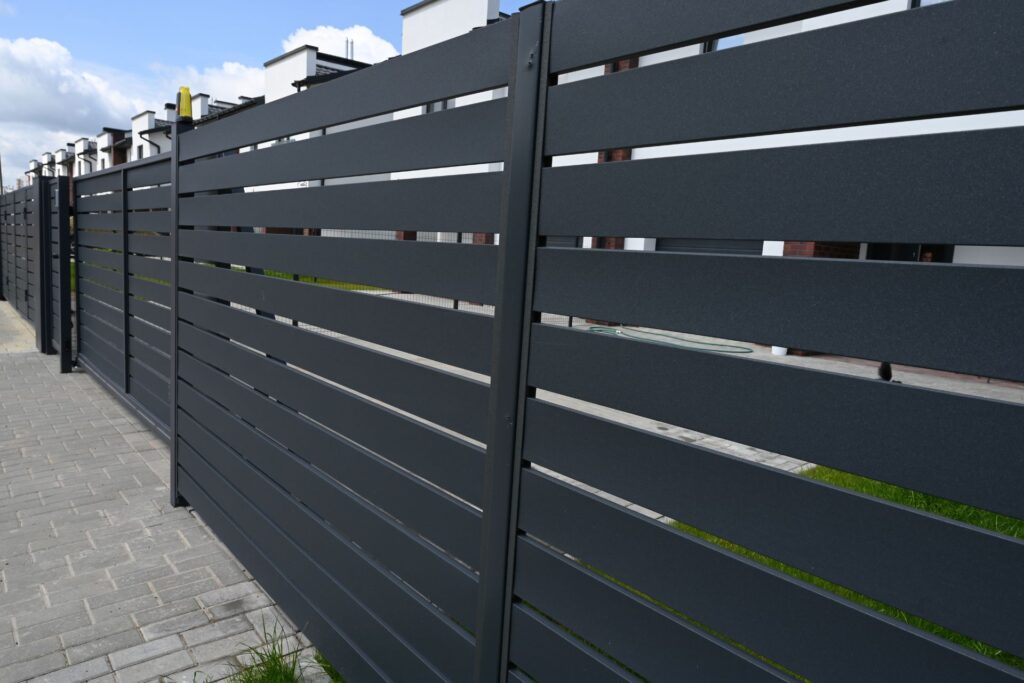Navigating the delicate balance of enhancing privacy and security, while maintaining harmony with your neighbor, can be challenging when it comes to shared driveways. In New Zealand, where shared driveways are a common feature in many residential areas, understanding the guidelines for building fences is not just about legal compliance; it’s about fostering positive relationships with those who live closest to us. This comprehensive guide is designed to walk you through the nuances of building fences on shared driveways in NZ, ensuring you’re well-informed to make decisions that respect both your rights and those of your neighbors.
When considering building a fence on a shared driveway in New Zealand, it’s essential to collaborate with your neighbor, as both consent and cost-sharing are required under the Fencing Act of 1978. Typically, expenses are divided equally, and designs should respect both privacy and aesthetics. If disagreements arise, mediation or legal avenues like the Disputes Tribunal can be pursued. Always consult local council bylaws for specific fence height regulations to ensure compliance. Effective communication and agreement with your neighbor are key to a successful project that enhances both properties.
Table of Contents
Understanding The Basics
When diving into the topic of shared driveways and the significance of fences, it’s essential to approach the matter with a nuanced understanding, particularly in the context of New Zealand’s residential areas. This piece aims to unpack these subjects with clarity and insight, ensuring that homeowners and property developers alike can navigate these aspects with confidence.
What is a Shared Driveway?
A shared driveway, as the name suggests, is a common path that provides access to multiple properties. This setup is particularly prevalent in New Zealand, where land division and housing developments often necessitate the efficient use of space. Shared driveways feature a unique blend of communal access and individual responsibility, making them an integral part of residential planning.
Definition and Common Features
At its core, a shared driveway is defined by its collective use by more than one property owner. Typically, this means that while the driveway lies within the boundaries of a single property, rights of access are legally granted to neighboring homeowners. Common features include a clear pathway wide enough to accommodate vehicles, pedestrian access, and sometimes, shared amenities like lighting or landscaping.
Importance in New Zealand’s Residential Areas
In New Zealand, the importance of shared driveways cannot be overstated. With an increasing demand for housing and the subdivision of land into smaller parcels, shared driveways offer a practical solution to access issues. They enable the efficient use of land, reduce the need for extensive road networks within developments, and foster a sense of community among residents. However, the shared nature of these driveways also necessitates clear agreements and understanding among all parties involved to ensure smooth cohabitation and usage.
Why Fences Matter
The adage “good fences make good neighbors” rings particularly true in the context of shared driveways and residential property boundaries. Fences play a crucial role not just in demarcating property lines but also in ensuring privacy, security, and peace among neighbors.
The Role of Fences
Fences serve several critical functions in residential areas. Firstly, they provide privacy, allowing residents to enjoy their outdoor spaces without being in full view of their neighbors. Secondly, fences enhance security by acting as a deterrent to unauthorized entry and by defining the perimeter of a property. Lastly, they play a key role in boundary definition, clearly marking where one property ends and another begins, which is especially important in densely populated areas or in properties with shared access points like driveways.
Potential Disputes and the Importance of Clear Guidelines
While fences are fundamentally beneficial, their construction and maintenance can sometimes lead to disputes between neighbors. Issues may arise over the height, style, or encroachment of a fence. In New Zealand, as in many countries, there are specific laws and regulations governing fence construction and maintenance, including the Fencing Act, which outlines the responsibilities of property owners. Adhering to these guidelines and engaging in open, respectful communication with neighbors can prevent disputes and ensure that fences serve their intended purpose without conflict.
In conclusion, understanding the basics of shared driveways and the significance of fences in New Zealand’s residential areas is essential for homeowners, property developers, and residents alike. By fostering a cooperative spirit and adhering to established guidelines and laws, communities can navigate the complexities of shared spaces and boundaries, ensuring harmonious and functional living environments for all.
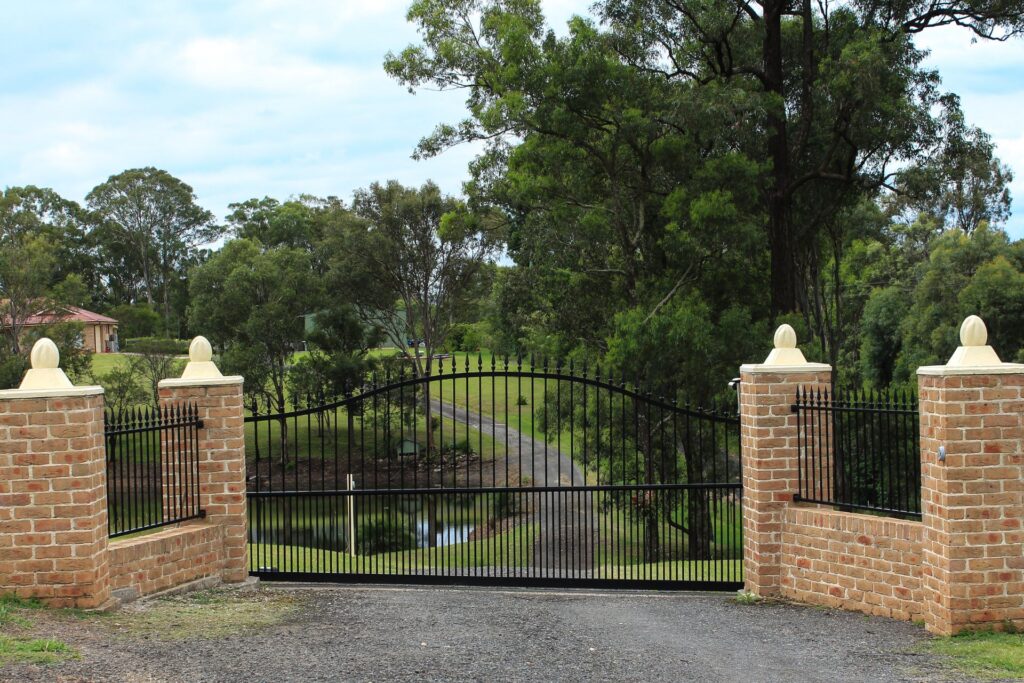
Legal Framework In New Zealand
Navigating the legal landscape of property management in New Zealand, especially when it involves shared structures like driveways and fences, requires a thorough understanding of the relevant laws and regulations. This section provides a comprehensive overview of the legal framework governing these common property features, focusing on the Property Law Act 2007, the Fencing Act 1978, and local council regulations. Whether you’re planning a new fencing project or managing a shared driveway, being well-informed about your obligations, rights, and the proper processes is essential for smooth and harmonious property relations.
Property Law Act 2007
The Property Law Act 2007 is a cornerstone of New Zealand’s legal system when it comes to property rights and responsibilities, particularly regarding shared driveways and fences. This Act outlines the legal framework for the ownership and use of these shared structures, emphasizing the importance of mutual agreement and maintenance responsibilities among adjoining property owners.
Key Sections Relevant to Shared Driveways and Fences
Section 297: This section deals with the rights of way and is crucial for understanding how shared driveways are governed. It outlines the rights of property owners to use these driveways and the responsibilities for maintenance and repair.
Section 323: Pertaining specifically to fencing, this section outlines how costs for repair and maintenance of boundary fences should be shared between neighbors. It emphasizes the principle of equitable contribution, ensuring that all parties bear a fair share of the costs involved.
Fencing Act 1978
The Fencing Act 1978 further clarifies the obligations, rights, and processes for adjoining property owners regarding fence construction, maintenance, and repair. It is designed to prevent disputes by providing clear guidelines on how fencing issues should be approached and resolved.
Key Points
Notice Requirement: Before any fencing work begins, the Act requires that notice be given to adjoining property owners, outlining the proposed works, materials to be used, and the estimated costs.
Cost Sharing: The Act stipulates that, unless agreed otherwise, the costs of erecting or repairing a boundary fence should be equally shared between the adjoining property owners.
Dispute Resolution: Provides mechanisms for resolving disputes should property owners disagree on fencing matters, including the appointment of a disputes tribunal or court proceedings in more complex cases.
Local Council Regulations
Local council regulations play a crucial role in the planning and execution of fencing projects. These bylaws can vary significantly from one council to another, affecting everything from the height and materials of fences to the specific requirements for shared driveways.
Importance of Checking with Local Councils
Compliance: Ensuring your fencing project complies with local bylaws is essential to avoid penalties, fines, or the need to modify or remove non-compliant structures.
Permits and Approvals: Some fencing projects may require permits or approvals before work can commence. Checking with your local council will inform you about the necessary steps to obtain these permissions.
Neighborhood Harmony: Adhering to local regulations helps maintain harmony within the community by ensuring that all structures meet the aesthetic and safety standards set by the council.
In conclusion, understanding and adhering to the Property Law Act 2007, the Fencing Act 1978, and local council regulations is paramount for anyone involved in managing shared driveways and fences in New Zealand. By following these legal guidelines, property owners can ensure that their projects proceed smoothly, minimizing the potential for disputes and fostering good relations with their neighbors. Always remember, when in doubt, consulting with a legal professional can provide clarity and direction tailored to your specific situation.
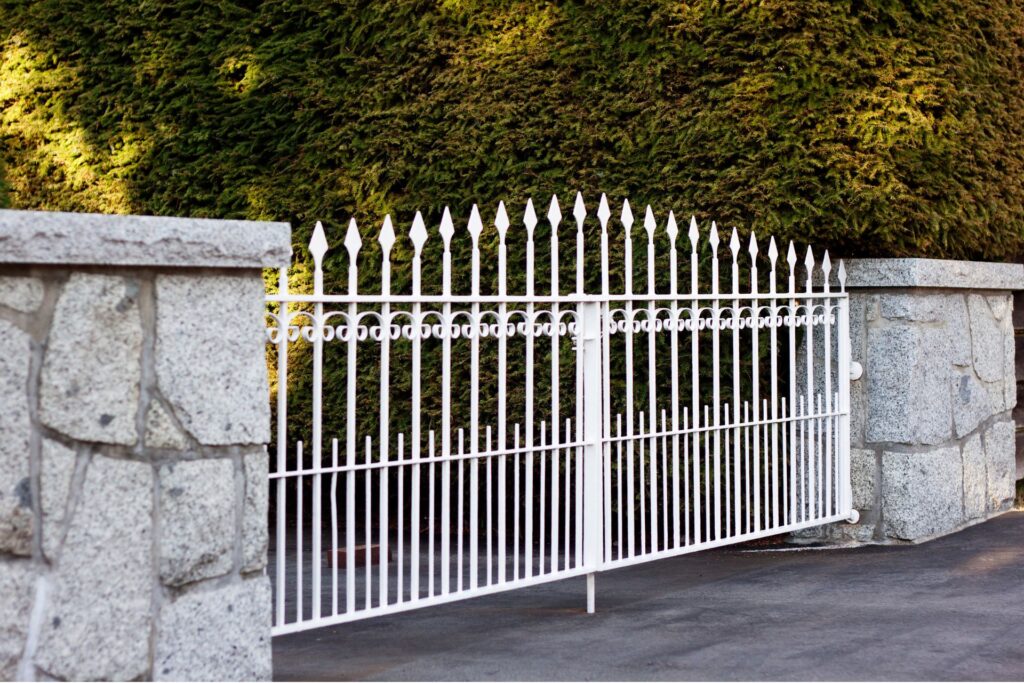
Planning And Communication
Creating a harmonious and productive relationship with your neighbor, especially during shared projects or boundary discussions, is pivotal. The foundation of such a relationship lies in effective planning and open communication. In this section, we’ll delve into the nuances of engaging your neighbor and creating a shared plan that respects both parties’ interests.
Engaging Your Neighbor
Strategies for Initial Conversations
The first step towards a successful neighborly collaboration is initiating the conversation in a friendly and respectful manner. Approach your neighbor with a positive attitude, expressing your intention to work together on the project. A casual setting, perhaps over a cup of coffee, can set the tone for a relaxed and open dialogue. It’s crucial to listen as much as you talk, ensuring your neighbor feels heard and valued from the get-go.
Tips for Maintaining a Positive Relationship Throughout the Process
Maintaining a positive relationship with your neighbor requires consistent effort and communication. Regular updates and open lines of communication are key. Be transparent about the project’s progress, and be receptive to your neighbor’s input and concerns. Celebrating small milestones together can foster a sense of joint accomplishment and goodwill. Remember, a little empathy goes a long way; always consider how you would want to be treated and act accordingly.
Creating a Shared Plan
Importance of Agreement on Design, Materials, and Costs
For any shared project, agreeing on the design, materials, and costs upfront is crucial. This agreement prevents misunderstandings and conflicts down the line. Involve your neighbor in the decision-making process, and consider hiring a neutral third-party expert if necessary. This can ensure that all decisions are made fairly and with the best interests of both parties in mind.
How to Handle Disagreements Amicably
Disagreements are natural, but they don’t have to derail your project. When faced with differing opinions, strive for compromise. Focus on finding solutions that meet both parties’ core needs and interests. Sometimes, taking a step back and giving each other space to reconsider positions can be beneficial. If necessary, don’t hesitate to seek mediation to resolve disputes constructively.
Planning and communicating effectively with your neighbor isn’t just about avoiding conflicts; it’s about building a relationship based on mutual respect and cooperation. By engaging your neighbor positively from the outset and creating a shared plan that takes into account both of your needs, you lay the groundwork for not just a successful project, but a stronger community bond. Remember, the goal is to enhance your living environment and relationship, turning neighbors into valuable allies.

Design And Construction Considerations
Choosing the Right Fence for Your Shared Driveway
When it comes to enhancing the aesthetic appeal and functionality of your shared driveway, selecting the perfect fence is crucial. The decision goes beyond just picking something that looks nice; it involves considering factors like aesthetics, durability, maintenance, and privacy, ensuring that the chosen fence serves its purpose while complementing the overall look of your property.
Aesthetics: The fence you choose should not only complement your home’s architectural style but also blend well with the neighbourhood’s vibe. Whether you’re leaning towards a classic picket fence or a modern metal design, the goal is to enhance curb appeal while respecting the shared nature of the driveway.
Durability: New Zealand’s varied climate demands materials that can withstand everything from sunny days to stormy nights. Opting for materials that are resistant to rot, rust, and other wear-and-tear factors will ensure your fence stands the test of time.
Maintenance: Consider how much time and effort you’re willing to invest in upkeep. Some materials, like vinyl, offer the look of wood without the need for regular painting or staining. Others, like aluminium or steel, require minimal maintenance and can look great for years with just occasional cleaning.
Privacy: Depending on the proximity of your homes and the layout of your driveway, privacy may be a significant concern. Options like solid wood panels or frosted glass provide privacy without sacrificing style.
In New Zealand, popular fencing materials include timber, which offers a traditional and natural look; aluminium, known for its durability and low maintenance; and vinyl, which has been gaining popularity for its versatility and ease of care. Each material comes in a variety of styles, from horizontal slats that offer a modern flair to classic vertical pickets for a timeless look.
Navigating Construction
Before the first post is dug or the first panel installed, thorough preparation is key to ensuring the construction process goes smoothly.
Steps to Take Before Building Begins
1. Land Survey: Especially important for shared driveways, a professional survey can help define property boundaries to avoid any disputes with neighbours.
2. Permits: Check with your local council to understand the regulations and obtain any necessary permits. This step is crucial to ensure your fence meets local guidelines and avoids potential legal issues.
Hiring Contractors vs. DIY
Deciding whether to hire a professional contractor or tackle the project yourself is a significant decision that can affect the project’s cost, quality, and timeline.
Pros of Hiring Contractors:
Expertise: Professional contractors bring experience and skills, ensuring the fence is built correctly and efficiently.
Time-saving: A professional team can complete the job faster than a DIY approach, which is particularly beneficial if you have a busy schedule.
Stress Reduction: Hiring contractors means you won’t have to worry about the intricacies of the construction process, from obtaining permits to sourcing materials.
Cons of Hiring Contractors:
Cost: Professional services come at a price, which can be significantly higher than the cost of materials if you were to DIY.
Less Control: While contractors will consult you, the day-to-day decisions and execution are out of your hands, which might not sit well with everyone.
Pros of DIY:
Cost Savings: Doing it yourself can save on labour costs, making it an attractive option for those on a tight budget.
Personal Satisfaction: There’s a sense of accomplishment and personalization that comes from building something with your own hands.
Cons of DIY:
Time and Effort: A DIY project can be time-consuming, especially if you’re learning as you go.
Potential for Mistakes: Without the expertise of a professional, there’s a higher risk of errors, which could cost more to fix in the long run.
Whether you decide to hire a contractor or embark on a DIY journey, the key is thorough planning and preparation. Understanding your needs, doing the research, and considering all factors involved will lead to a successful project that enhances your shared driveway’s functionality and aesthetic appeal.

Cost Sharing And Maintenance
Navigating the complexities of cost sharing and maintenance can be a daunting task, especially when it involves shared property or joint ventures. It’s not just about dividing expenses; it’s about fostering a harmonious relationship through fairness and mutual respect. This section delves into the intricacies of splitting the bill fairly and handling ongoing maintenance, ensuring that all parties are on the same page.
Splitting the Bill Fairly
Legal Requirements and Ethical Considerations
When it comes to sharing costs, both legal frameworks and ethical standards play crucial roles. Legally, agreements must comply with local laws and regulations, ensuring that all financial responsibilities are clear and enforceable. Ethically, it’s about fairness and equity, ensuring that no party feels overburdened or underappreciated.
An understanding of both these aspects helps prevent future conflicts and builds a foundation of trust and cooperation. Whether it’s a shared business venture, co-ownership of property, or any other arrangement involving shared costs, it’s essential to have a clear, legally sound agreement that also respects the principles of fairness and equity.
Examples of Cost-Sharing Agreements
Cost-sharing agreements can vary widely, depending on the context and the parties involved. For instance, in a real estate co-ownership, the agreement might detail how mortgage payments, property taxes, and insurance costs are split, along with any utilities or service charges. In a business venture, it might outline how operational expenses, capital investments, and profits are shared.
Effective agreements include mechanisms for adjusting contributions if circumstances change, ensuring the agreement remains fair over time. They also typically include dispute resolution processes, offering a structured way to resolve disagreements without damaging relationships or resorting to legal action.
Ongoing Maintenance
Establishing Responsibilities for Future Repairs and Upkeep
Ongoing maintenance is a critical aspect of any cost-sharing arrangement. Establishing clear responsibilities for repairs, upkeep, and improvements prevents misunderstandings and conflicts. This involves not just dividing costs, but also deciding who will oversee contractors, manage maintenance schedules, and handle emergency repairs.
A well-crafted maintenance plan, included as part of the initial agreement, can save countless headaches down the line. It ensures that the property or venture remains in good condition, protecting the investment and interests of all parties involved.
How to Address New Disputes or Issues as They Arise
Even with the best planning, new disputes or issues can arise. The key to addressing these challenges lies in having a predefined process for conflict resolution. This might involve mediation, arbitration, or periodic reviews of the agreement to adapt to new circumstances.
Open communication is crucial. Encouraging regular meetings or check-ins can help preempt many issues by providing a forum for airing concerns and adjusting plans as needed. Additionally, it’s important to be flexible and open to renegotiating terms if significant changes occur that affect the original agreement.
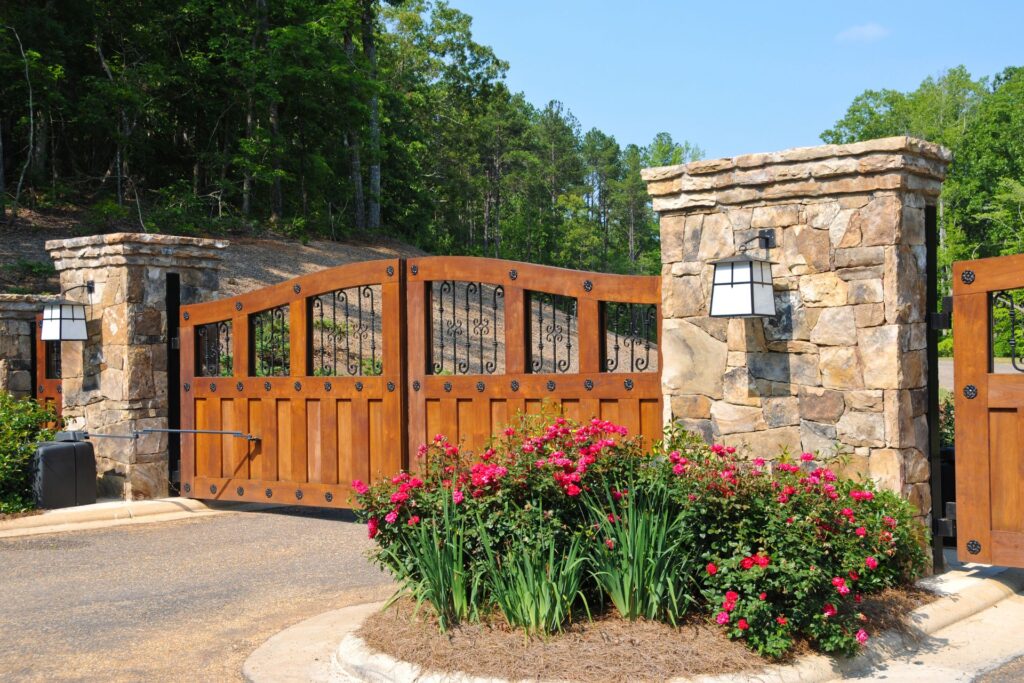
Case Studies And Examples
In this section, we delve into real-life stories and examples from neighbours across New Zealand who have successfully navigated the process of building a fence on a shared driveway. These success stories and lessons learned will provide valuable insights for anyone looking to embark on a similar project.
Success Stories
One standout example comes from a neighbourhood in Auckland, where two families shared a driveway that led to their respective homes. Initially, there were concerns about privacy and security, as the open driveway offered little to no boundary between the properties. After much discussion, they decided to construct a fence that would not only enhance their privacy but also improve the overall aesthetics of their homes.
The process began with open communication between the neighbours, discussing their needs, concerns, and preferences for the fence design. They jointly hired a surveyor to ensure the fence would be built precisely along the property boundary. By splitting the costs and responsibilities, they were able to construct a beautiful, durable fence that satisfied both parties. This story highlights the importance of communication and collaboration when undertaking a shared project.
Lessons Learned
While many neighbours have successfully completed their fencing projects, there are common pitfalls that can arise. Here are some lessons learned on how to avoid them:
Lack of Clear Communication: Misunderstandings can occur when there isn’t clear, open communication from the start. It’s crucial to discuss every aspect of the project, including design, materials, costs, and maintenance responsibilities, to ensure everyone is on the same page.
Not Consulting a Professional: Attempting to DIY without professional advice can lead to mistakes, especially regarding property boundaries. Hiring a surveyor or a fencing contractor can provide expertise and peace of mind.
Ignoring Legal Requirements: Every local council in New Zealand has specific rules regarding fencing, especially for shared properties. Failing to adhere to these regulations can result in fines or being required to modify or remove the fence. Always check with your local council and obtain the necessary permits before starting your project.
Underestimating Costs: Costs can escalate if not properly planned. Ensure you have a detailed quote from contractors and a clear agreement on how costs will be shared. Consider setting aside a contingency fund for unexpected expenses.
By looking at these success stories and understanding the lessons learned, you can navigate the challenges of building a fence on a shared driveway with greater ease and confidence. Remember, the key to a successful project lies in open communication, proper planning, and a collaborative spirit between neighbours.
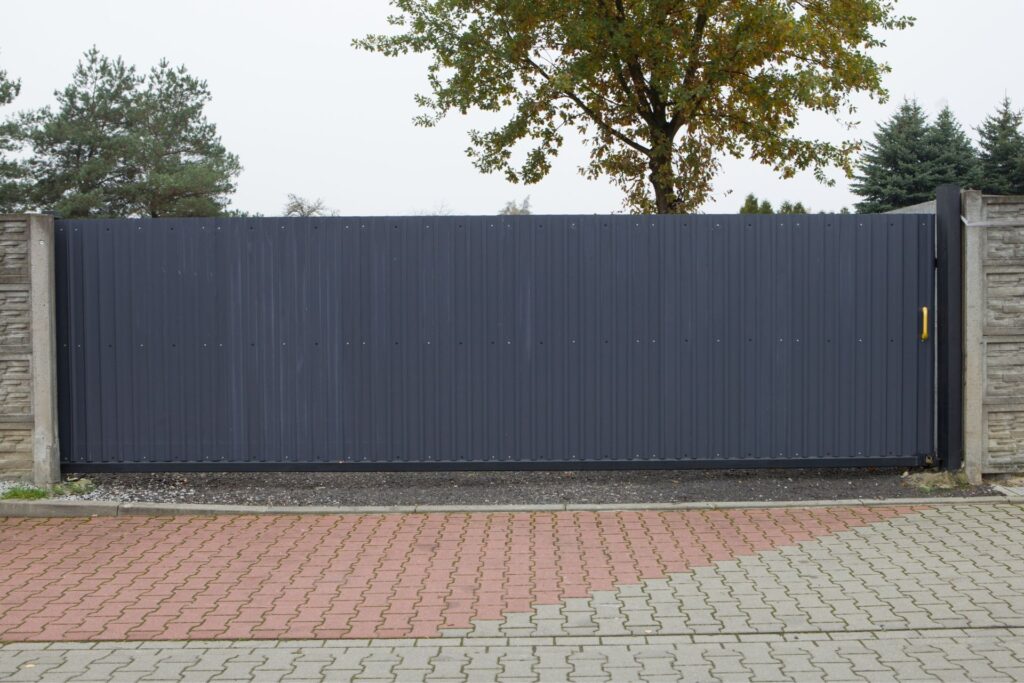
Do I need my neighbor’s permission to build a fence on a shared driveway?
Yes, building a fence on a shared driveway in New Zealand requires the consent of your neighbor. The Fencing Act of 1978 outlines the process for how neighbors should share the costs and decision-making regarding boundary fences, which includes fences on shared driveways.
How are the costs of building and maintaining the fence divided?
Costs are typically shared equally between the neighbors who benefit from the fence. The Fencing Act provides guidance on cost-sharing, including how to issue a fencing notice and how to proceed if there’s a disagreement about the costs.
What if my neighbor and I can’t agree on the type of fence or the costs?
If you and your neighbor can’t reach an agreement, either party can take the matter to the Disputes Tribunal or the District Court for a decision. It’s recommended to try mediation first, as it’s a less adversarial and costly option.
Can I build the fence if my neighbor refuses to share the cost?
Yes, you can proceed to build the fence if you’ve followed the proper procedure for serving a fencing notice and your neighbor has refused to contribute. However, you’ll have to cover the costs yourself. Keep in mind, if your neighbor later agrees to the fence, they may be required to pay their share of the cost.
What considerations should be taken into account when designing the fence?
When designing the fence, consider factors such as the materials, height, design, and how it will affect both properties. You should aim for a design that respects both parties’ privacy, security needs, and aesthetic preferences.
Are there specific legal requirements for fence heights on shared driveways?
Yes, local council bylaws often dictate the maximum height of fences in residential areas, including those on shared driveways. Typically, the maximum height is around 2 meters, but it’s essential to check with your local council for specific regulations.
How do I handle maintenance and repairs for the fence?
Maintenance and repair responsibilities should be shared between the neighbors. It’s best to have an agreement in place for how future repairs and maintenance tasks will be managed and financed.
What if I want to remove or replace an existing fence on a shared driveway?
Removing or replacing an existing fence requires the same process as building a new one. You must obtain your neighbor’s consent and agree on the removal and replacement process, including costs and design of the new fence.
Can a shared driveway fence affect property values?
Yes, a well-designed and well-maintained fence can enhance the curb appeal and security of both properties, potentially increasing property values. Conversely, a poorly maintained or unattractive fence might detract from property values.
Where can I find more information or seek help if disputes arise?
For more information, you can consult the Fencing Act of 1978, contact your local council, or seek legal advice. If disputes arise, consider mediation services to help reach an agreement, or as a last resort, take the matter to the Disputes Tribunal or District Court.
Conclusion
Building fences on shared driveways in New Zealand is a task that transcends mere construction, embodying the principles of understanding, adherence to guidelines, and the cultivation of positive neighbourly relations. It’s a process that demands patience, open communication, and a collaborative spirit, where the mutual respect and understanding between neighbours serve as the cornerstone for success. The endeavor not only aims to enhance the aesthetics and functionality of properties but also fosters stronger community bonds.
A well-planned fence, agreed upon and built through a harmonious partnership, can significantly improve privacy, security, and the overall appearance of one’s home, while also strengthening the ties between neighbours. In essence, while the physical structure of the fence defines property boundaries, the process of its creation offers an invaluable opportunity to build a more cohesive and cooperative neighbourhood, highlighting the profound impact of good neighbourly relations and the importance of approaching such projects with a shared vision and respect.



